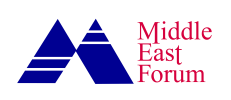Despite facing acute shortages of electricity and natural gas at home and significant hurdles in receiving payments due to U.S. sanctions, Iran continues to export energy to Iraq.
This paradox reflects Tehran’s long-term geopolitical calculation: embedding its influence deeply into Iraq’s economy and political system. Over the past two decades, Iran’s total exports to Iraq have surged more than a hundredfold, illustrating the depth of this entanglement.
Following the fall of Saddam Hussein’s regime in 2003, Iran expanded its political and economic footprint in Iraq. Energy exports became a key pillar of this influence. From a modest $145 million in non-oil exports in 2005, Iran’s commodity exports to Iraq ballooned to $11.9 billion in 2024—accounting for 20 percent of its total non-oil exports. This figure excludes around $3 billion in electricity and natural gas exports to Iraq last year.
Iran has exported more than $100 billion worth of goods and services to Iraq over the past two decades—despite persistent criticism from Iraqi citizens regarding the poor quality of Iranian products.
Additionally, engineering services provided to Iraq have totaled $4 billion over the past six years, making Iraq the leading destination for such exports. According to Middle East Forum estimates based on Iranian customs data, Iran has exported more than $100 billion worth of goods and services to Iraq over the past two decades—despite persistent criticism from Iraqi citizens regarding the poor quality of Iranian products. Iran began exporting electricity to Iraq in 2005, generating around $10 billion in revenue over the past two decades. In 2017, it added natural gas exports, delivering more than 60 billion cubic meters over seven years, valued at nearly $18 billion. Altogether, Iran’s total exports to Iraq have approached $130 billion over 20 years—equal to nearly half of Iraq’s and one-third of Iran’s 2024 gross domestic product. Meanwhile, Iranian imports from Iraq remained negligible—a few tens of millions of dollars annually before U.S. sanctions on Iran in 2018. They only recently reached around $500 million, still a marginal figure compared to Tehran’s exports.
This economic imbalance has rendered Iraq reliant on Iranian goods, energy, and services. Such dependence has enabled Iran to exert political influence in Baghdad, fund its proxy groups, and use Iraqi financial networks to facilitate currency smuggling and covert oil sales under Iraqi branding. Since July 2023, the U.S. Treasury has restricted the access of 22 Iraqi private banks from U.S. dollar transactions. In February 2025, investigations began into five more banks. Currently, these sanctions prevent one-third of Iraqi private banks from transferring or conducting any financial transactions involving U.S. dollars, thus limiting their access to Iraqi funds held in U.S. banks. This crackdown has tightened Iran’s access to hard currency through Iraq—a crucial lifeline amid Tehran’s broader isolation from the global financial system.
Iran’s regional influence has diminished since mid-2024 after Israeli blows against its proxies and the fall of the Bashar al-Assad regime in Syria, leaving its position in Iraq more exposed. This shift also has created new space for Iraq to assert greater independence. The Trump administration’s “maximum pressure” campaign against Tehran has encouraged Baghdad to begin diversifying its partnerships and reducing its reliance on Iran’s political and economic orbit.
Iraq imports only 3 percent of its electricity demand from Iran, but roughly one-third of its power generation relies on Iranian gas.
Yet, Tehran continues to wield its energy card. In March 2025, Washington allowed Iraq’s waiver for gas imports from Iran to remain in place temporarily, though it suspended the electricity waiver. Baghdad has pledged to end its dependence on Iranian gas by 2028. Currently, Iraq imports only 3 percent of its electricity demand from Iran, but roughly one-third of its power generation relies on Iranian gas. This vulnerability could turn into a political and economic crisis if U.S. waivers are withdrawn entirely.
According to the International Monetary Fund, Iraq’s economy is expected to shrink by 1.5 percent in 2025, with the phasing out of U.S. energy import waivers a contributing factor. Though Turkey has doubled its electricity exports to Iraq this year, Iraq’s gas shortfall remains unresolved in the short term, posing a serious threat to its electricity grid, industry, and potentially triggering summer blackouts and civil unrest. Baghdad has signed deals with foreign companies, including an American one, to boost domestic gas production, but those projects will not be operational for years.
Since the 2018 imposition of U.S. “maximum pressure” sanctions on Tehran, Iraq has accumulated nearly $8 billion in unpaid gas and electricity debts to Iran. Despite this, Tehran insists on continuing exports—reflecting its strategic calculus rather than economic logic. But this leverage may be slipping. According to the International Monetary Fund, Iran’s total exports in 2025 are projected to drop by $11 billion compared to 2024. The fund forecasts a daily reduction of 300,000 barrels in Iranian oil exports due to renewed U.S. pressure, compounded by falling global oil prices.
Iran earned nearly $110 billion in oil, non-oil, and services exports last year. Of this, 14 percent—or about $15 billion—went to Iraq, making it Iran’s second-largest export market after China. By comparison, the United Arab Emirates—Iran’s third-largest export market—imported less than half as much from the Islamic Republic as Iraq did last year.
Iran’s economic influence over Iraq remains formidable but fragile.
The U.S. Department of the Treasury restricting Iraqi private banks’ access to U.S. dollars undermines Tehran’s ability to repatriate funds. Partly as a result, the Iranian rial lost nearly 50 percent of its value in 2024. The International Monetary Fund expects Iran’s nominal gross domestic product to plunge by $60 billion in 2025, reaching $341 billion—its lowest level in 18 years.
Iran’s economic influence over Iraq remains formidable but fragile. Continued U.S. financial restrictions, domestic discontent in Iraq over Iranian interference, and Baghdad’s gas diversification plans pose serious threats to Tehran’s hold. If Iraq successfully reduces importing Iranian goods and replaces Iranian gas with domestic or Turkmen supplies—and further aligns its banking system with international standards—Iran may lose one of its last significant geopolitical and financial buffers in the region.
For the U.S. and its allies, bolstering Iraq’s energy independence and financial integrity should be a strategic priority. For Tehran, the cost of clinging to Iraq soon may outweigh the benefits.







